
HOSTS- Jeremy Burns, Matthew Scott Phillips
TYPE- Special Topics
DURATION- 84:22
BUMPER MUSIC- "String Quartet No.4, 3rd Movement"
(Matthew Scott Phillips)
ANNOUNCER- Mike Cunliffe
Stringed instruments have a number of environmental and conditioning considerations that we need to be familiar with, if we want them to have a long and happy life. In this episode we will talk about the piano (really a percussion instrument but it does have many strings), the harp, the acoustic and electric guitars (along with other hollow-bodied and solid bodied, wooden instruments),
the banjo and the symphony strings
(bass, cello, viola and violin).
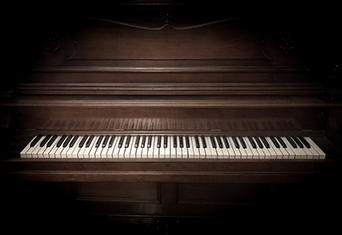
The following tips were drawn from:
steinway-piano.com
-Tune your piano at least twice a year. When this schedule is neglected it can cause kinks in the string (where they wrap around the pin). If the kink is within the speaking length of the string it can cause "false beats" or a wavering in the tones.
-The ideal environment for a piano is 72°F and at about 49% humidity. To maintain these numbers special equipment can be used to add heat or humidity when needed.
-In areas with hot summers and cold winters, pitch will fall a few frequencies in the winter and raise back up (possibly over shoot) in the summer. Experienced tuners recommend tuning mid spring (as it warms up) and mid fall (as it cools down and we begin to heat our homes).
-A tuner might use a cloth that is pushed under the strings with a flat piece of metal, One can also use a medium sized paint brush to dust.
-Clean the felt every 5 years (on hammers and under keys). Upright-keys can be removed and cleaned with relative ease. Grand pianos involve more of a process.
-Beware of moths! They can lay eggs on the felt. The keratin in the fabric feeds the larvae and, in the process, they will destroy the fabric. If an exterminator doesn't sound ideal, moth balls or cedar can ward away these critters.
-To clean the keyboard, use a damp cotton cloth and avoid alcohol. Alcohol will remove oils but it dries up everything in its wake.
-To avoid oils and smudges, in general, try to wash your hands before you play.
-Regarding the wood finish, check with your piano manufacturers to find out the best cleaning solutions for each brand. House hold brand cleaners are often too harsh for the wood and keyboard finishes.
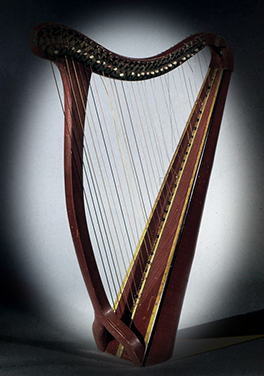
(Photo Credit: Louis Joseph Domeny)
The following tips were drawn from:
dustystrings.com
- We observe wood cleaning and dusting protocols that are similar to those of the piano. Dusting seems to be key. Feather dusters, medium sized paint brushes or canned air can all be useful and affordable options.
-Temperature is very important for wooden instruments with glued wooden parts. At around 120º F, glue will soften and joints will pull apart. When the instrument cools down, it may harden in worse condition.
-40-50% humidity is recommended.
-Harp strings can be metal and nylon. Unlike the piano, we’re touching these strings with our hands. So try to keep your hands clean and free of dirt and oils before you play.

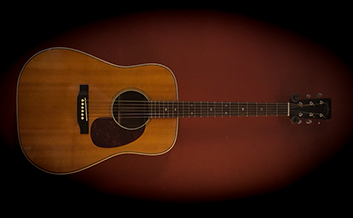
The following tips were drawn from:
Frank Ford at acousticguitar.com
-An acoustic guitar wants to be in an environment that is between 70°and 80° F and between 30 and 40% humidity.
-A great thing to use for wiping and polishing is an old 100% cotton t-shirt. The more times it’s been washed, the less lint deposits you need to worry about.
-Microfiber is preferred by many because it is good at picking up small particles. However, it also good at holding onto these particles. If you don't remove these particles from your microfiber cloth, they can scratch your finish the next time you wipe your instrument.
-Beware of paper towels, as they are very abrasive. If you must use a paper towel, use a non woven shop towel. They don’t break down as much.
-When wiping, a circular motion is preferred.
-Huff breath on stubborn smudges. For worse, dampen cloth (not the instrument) with water and mild dish soap solution (2 drops per 12oz). Beware of too much moisture. If there are cracks in the finish, water can get into the wood and cause swelling and more cracking.
-Follow up with a dry cloth. There are many polishes and cleaners available. In general, stay away from household cleaners and polishes. Lemon oil is good for unfinished wood. Don’t use alcohol because it will dry the wood and possibly corrode the finish.

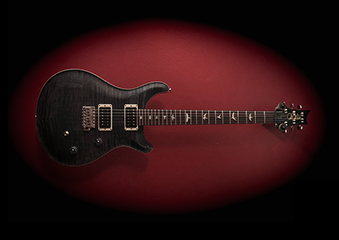
-An electric guitar wants to be around 68° F and around 45% humidity. Because a lot of electric guitars are solid body and painted or coated, humidity isn't as intrusive when compared to acoustic instruments. However, extreme temperature fluctuations should still be avoided.
-If you don't have sufficient knowledge on how to set your guitars intonation or bridge, there's no shame in bringing it in to a professional. Try to do this once or twice a year. They will adjust your action and your intonation.
-If you wipe your strings after you play, they will last a little longer.
-To protect your jack, where the cable plugs in, a 45º angle cable (threaded through your guitar strap) is ideal for "side entry" jacks. For "front entry" jacks, a regular straight cable will do fine. Still, when you thread it through your strap, it will add strain relief as an extra layer of protection.
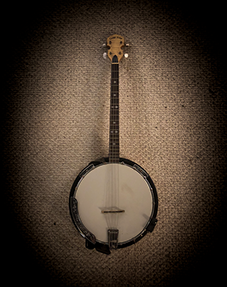
The following tips were drawn from:
deeringbanjo.com
Deering Banjos recommend a 3 cloth system
(don’t mix these up):
1-Contains an anti-tarnish agent for hardware.
2-Wax cloth with polishing agent for the neck and finger board.
3-Tarnish removal cloth, for hardware.
-If you don't have the means, there is always the tried and true 100% cotton cloth.
-To clean the head (the drum head) use cloth slightly dampened with water or a mild window cleaner.
-To clean the neck, almond oil is often preferred.
-The banjo, like an acoustic guitar, wants to be in an environment that is between 70°and 80° F and between 30 and 40% humidity.
-To preserve the fret board, keep finger nails short. Long fingernails will eventually wear grooves into your fretboard.
-Fretting too hard will wear grooves into your frets.
-Wash your hands before you play. Lotions, aftershave, perfumes, colognes aren’t great for the finish or the strings.
-For a good strap favor leather or cloth over hard plastics, which can damage your finish.
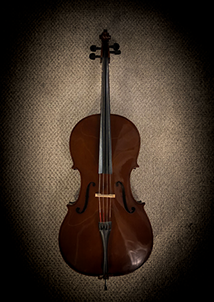
The following tips were drawn from:
"String Instrument Maintenance - How to take care of your violin/viola/cello in Winter/Dry Climate"
by: EmilyPlaysCello
-A little humidity is okay. The lack of humidity can be a problem. In the winter, you want to maintain humidity levels of 30% minimum. 40-50% is optimal.
-Too dry of an atmosphere can result in glue becoming brittle and loosing its grip. This can cause cracks it the wood.
-Some choose to use a "Dampit". This is a flexible rubber tube with a sponge within. This is moistened on a daily basis and inserted into the F hole.
-You can get humidifiers and humidity monitors to balance your environment.
-Extreme temperature changes can negatively effect your instrument. If you bring your instrument into a new environment, let it sit in the case and acclimate for about an hour, or for as long as time will allow, before you take it out. If you are a professional concert player, try to factor that into your schedule.
-The tuning pegs are typically made of ebony, rosewood or box wood. They are held by friction and tension. If they won't stay in, try peg compound or "peg dope". Take out your peg, one string at a time! Notice the two shiny bands. This is where the pegs makes contact with the peg board. This is where you apply the compound.
-Your bow is to be tightened only until a certain "thumb tight" amount of tension is felt. Over tightening it can cause the hairs to pop out at the point or even damage the bow. Always loosen between uses. Clean the stick to remove rosin dust.
-It's worthwhile take your bow to a luthier as part of your regular stringed instrument check up.
-The main factors that influence the structure, performance and lifetime of an instrument are temperature, humidity and improper upkeep practices for the wood, strings and hardware.
-The ideal temperature for most wooden instruments is between 68º and 72º F.
-The ideal humidity for most wooden instruments is between 40 and 50%.
-Avoid extreme temperature fluctuations. If you must encounter these, let your instrument adjust to the new environment by letting it sit in the case for a while.
-Try to adopt the habit of wiping down your instrument and strings before putting it back into your case. Sweat can corrode strings. Dirt, oils and dead skin can dull the sound of your strings.
-A 100% cotton cloth seems to be the most effective and affordable cleaning rag. Now you don't have to throw away that old t-shirt.
-All instruments require maintenance at least twice a year (depending on amount of use). Find a luthier or a technician that you can build a good relationship with. Not unlike a family doctor, it's good to have someone who will get to know your instrument over time.
